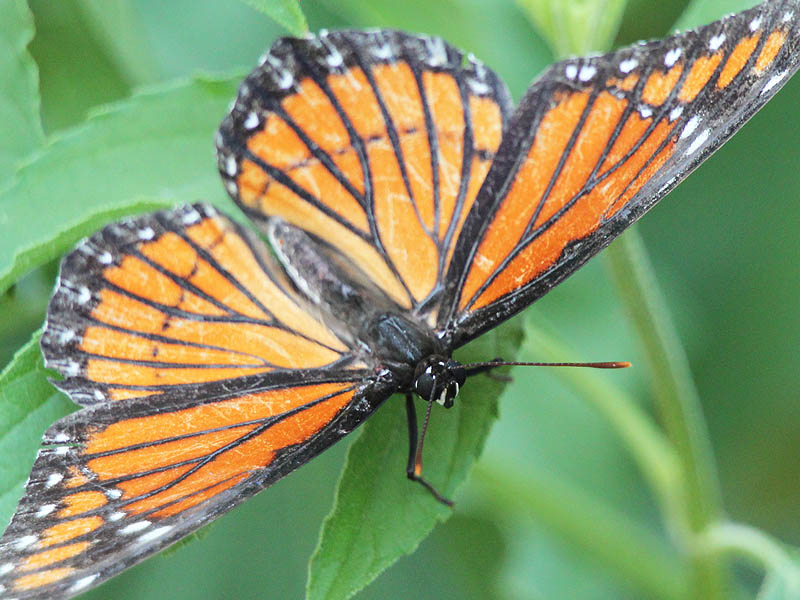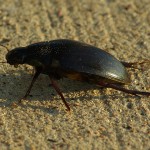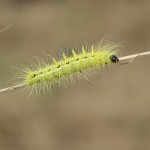David Mimlitch has provided us with these pictures of a Viceroy butterfly.
Viceroys are well known mimics of the Monarch Butterfly. The two butterfly species appear very similar in coloration and in pattern. For years it was thought that the Viceroy was benefiting from predator aversion to the bitter tasting Monarch Butterfly.
This type of mimicry strategy is known as Batesian Mimicry. Batesian Mimicry is described by Wikipedia as:
A form of mimicry typified by a situation where a harmless species has evolved to imitate the warning signals of a harmful species directed at a common predator. It is named after the English naturalist Henry Walter Bates, after his work in the rainforests of Brazil.
New research suggest that the Viceroy may actually be just as foul tasting as the Monarch Butterfly. This means that the two species actually reinforce each other’s predator aversion by using a form a of mimicry known as Müllerian Mimicry. According to Wikipedia,
Müllerian Mimicry is a natural phenomenon when two or more poisonous species, that may or may not be closely related and share one or more common predators, have come to mimic each other’s warning signals. It is named after the German naturalist Fritz Müller, who first proposed the concept in 1878


Observation Details
| County | – | Dallas |
|
| City | – | Dallas | |
| Date | – | Aug 15, 2012 | |
| Time of Day | – | Noon | |
| Temperature | – | Hot (greater than 89°F/32°C) | |
| Weather | – | Cloudy | |
| Habitat | – | Recreation-Park | |
| Type of Behavior | – | Roaming | |
| Gender | – | Uncertain | |
| Maturity | – | Adult | |
| Observer | – | David Mimlitch | |
| Main Article | – | Viceroy | Observation Location |






